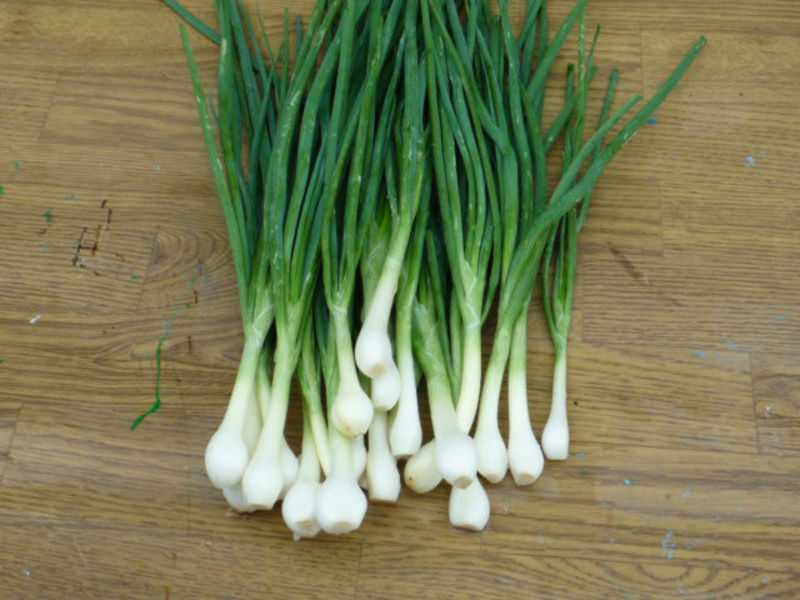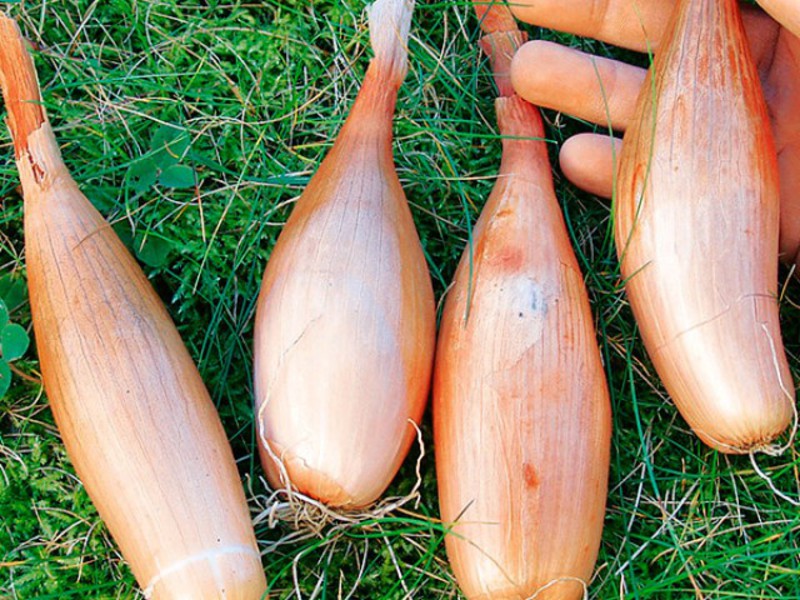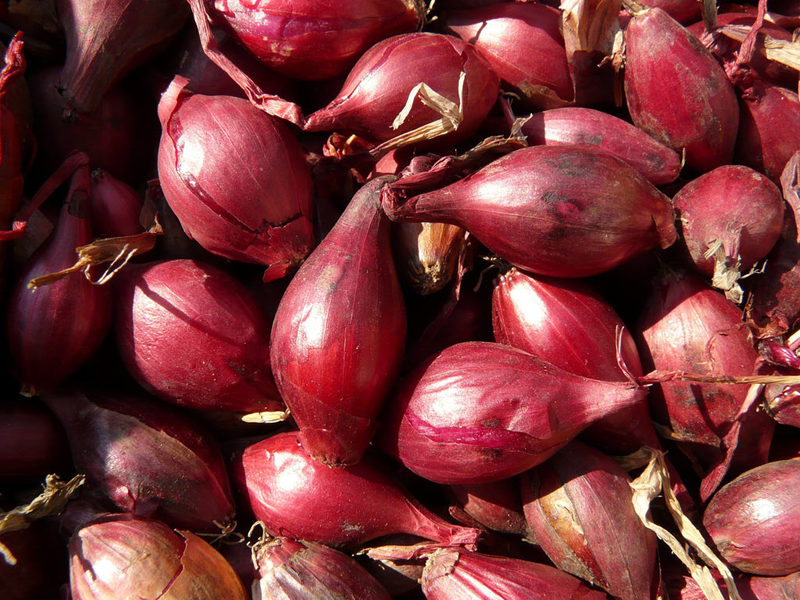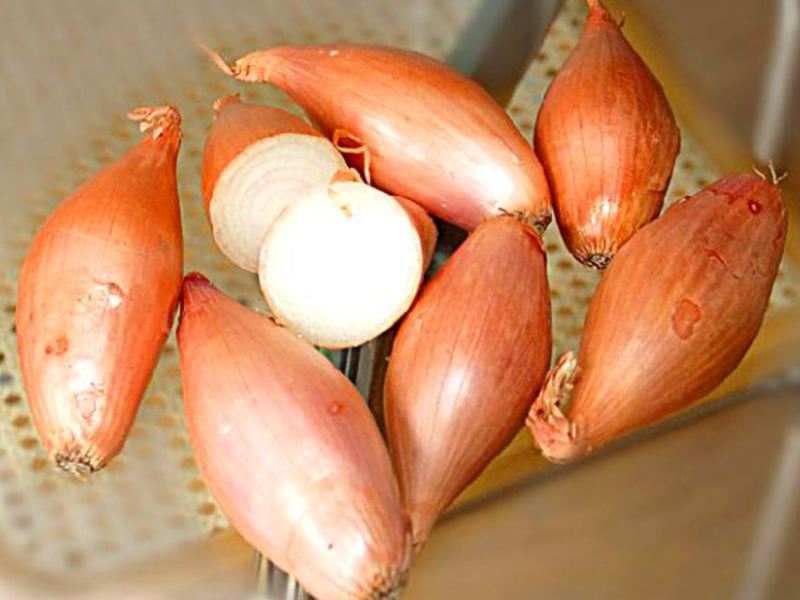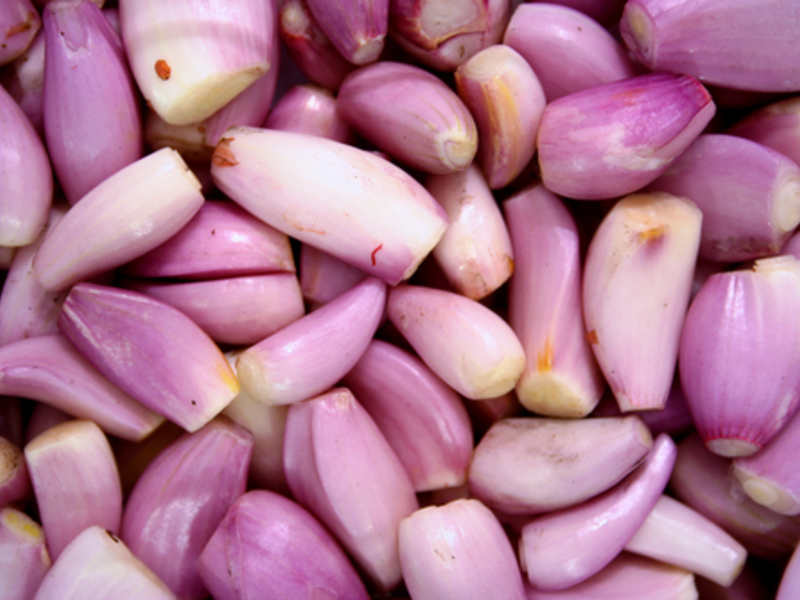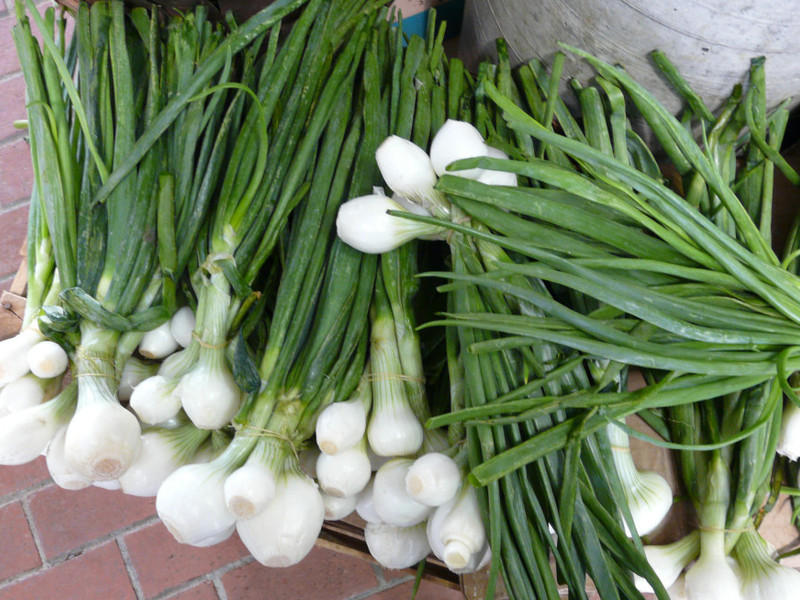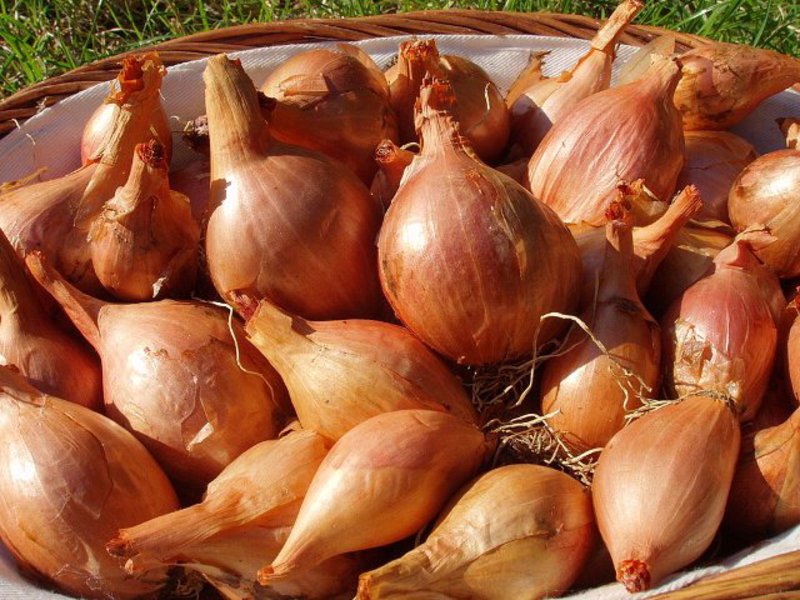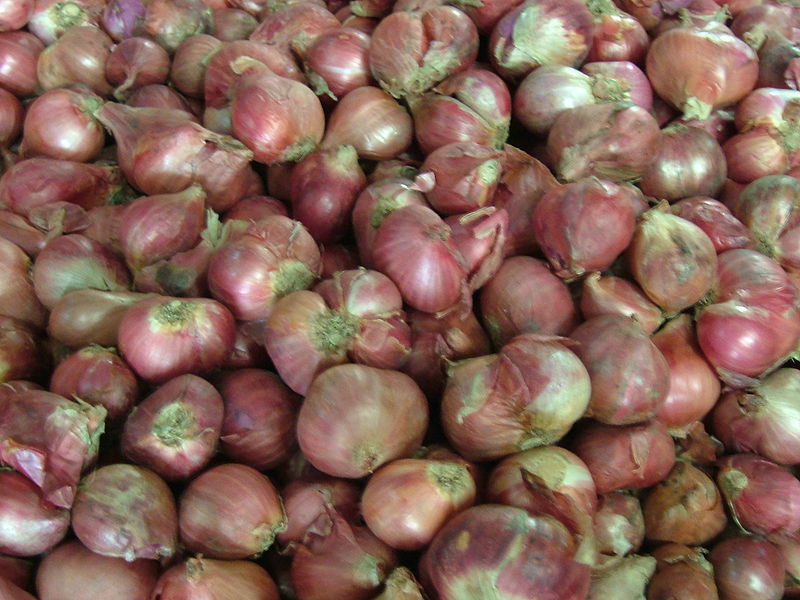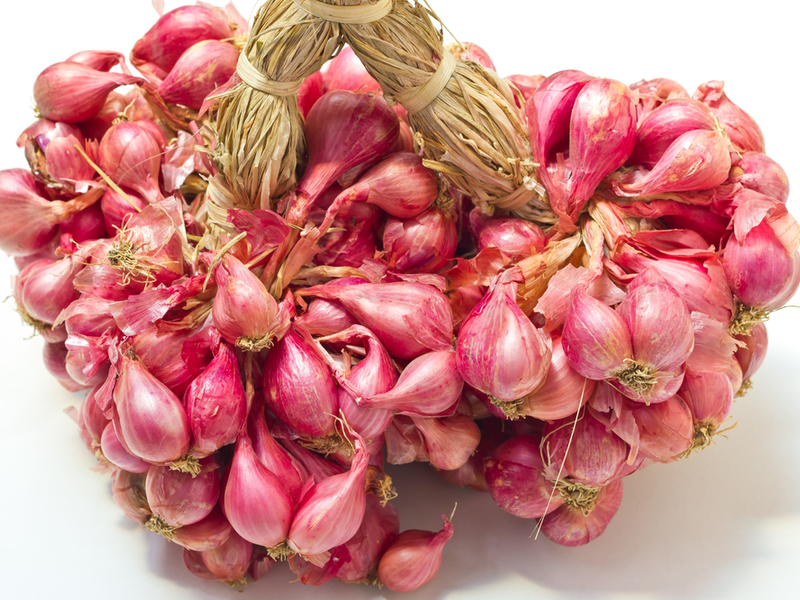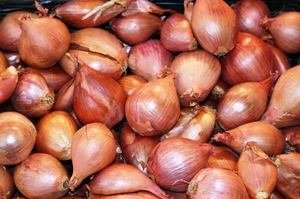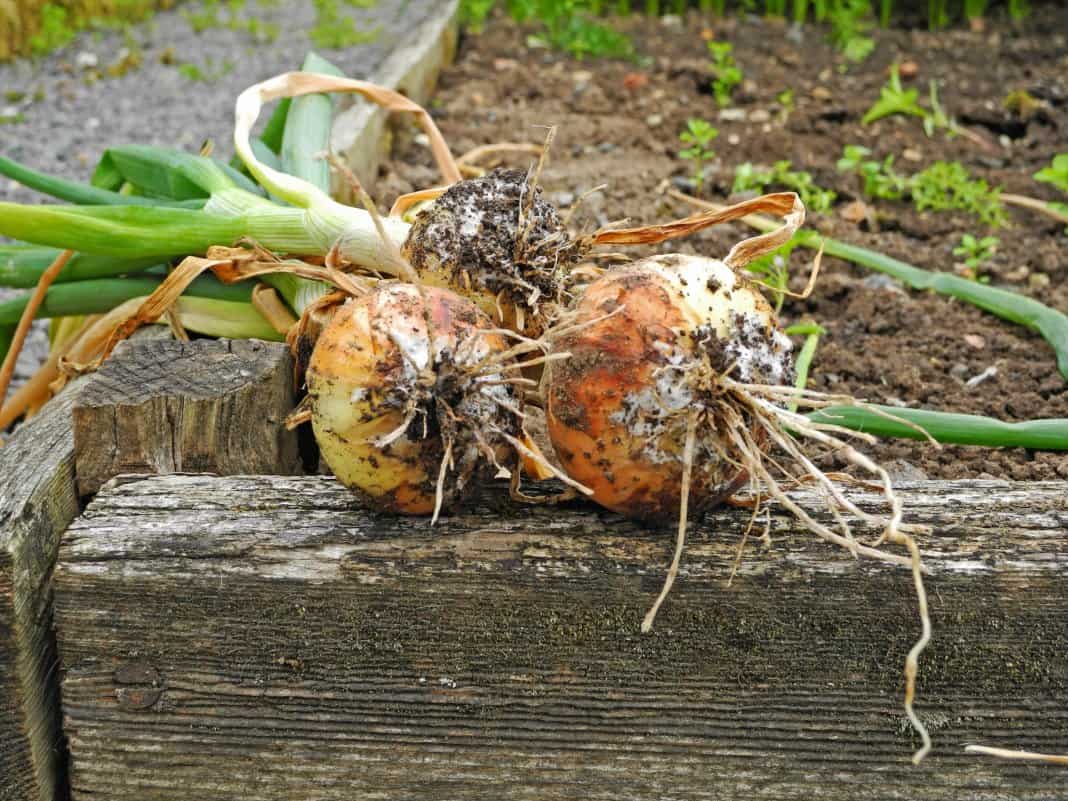Relatively recently, beyond the Urals and in Siberia, due to its properties and characteristics of cultivation, shallots have become popular among gardeners. In the countries of Europe, the near abroad, in the Far East and the Caucasus, it has been loved and grown for a long time. First of all, shallots are loved because of their aromatic, vitamin, tender and juicy greens, early maturity and winter hardiness. Delicate, sweet, tearless and giving fast and high yields, onions are the dream of any gardener and gourmet.
Content
Description and main advantages of shallots
It is a perennial herb from bulbs. forms "family nests", therefore, the people often call it "family". Its slightly elongated bulbs have a weight of 20 to 50 grams and thin scales. Shallot feathers are delicate, thin and begin to coarse very late.
Unlike onions, shallots contain more dry matter, therefore it is suitable for drying. Until the next harvest, it can be perfectly preserved in room conditions.
Benefits of shallots:
- Shallots are suitable for growing on the windowsill, as a lot of greenery is obtained from the compact bunch of the plant.
- A high yield is formed due to the mass of a nest of 150-300 grams, in which up to 10 bulbs can form.
- Fast and gentle distillation.
- Stored for a long time without germinating.
- Does not lose its qualities within 8-12 months.
- Early drying and aging of leaves protects the plant from damage by cervical rot and peronosporosis.
- Amicable lodging of feathers at the end of summer allows you to get well-ripened bulbs in autumn.
- The bulbs have a short growing season and, as a result, early ripening.
Shallot bulbs and leaves contain many useful substances:
- minerals;
- ascorbic acid;
- essential oil;
- mineral salts of iron, phosphate, calcium, potassium;
- B vitamins;
- phytoncides;
- carotenoids.
Shallots are distinguished by dietary and some medicinal properties. It is used to treat some stomach and eye diseases.
Shallots
Onion varieties differ in taste, degree of branching, color of scales and ripening times.
Early ripening shallots
 "Belozerets 94" - the plant ripens in 75-85 days, has rounded bulbs weighing 20-27 g and a pungent taste. The color of the scales is purple, with a lilac tint. The variety is recommended for cultivation in the regions of the North Caucasus.
"Belozerets 94" - the plant ripens in 75-85 days, has rounded bulbs weighing 20-27 g and a pungent taste. The color of the scales is purple, with a lilac tint. The variety is recommended for cultivation in the regions of the North Caucasus.- "Vitamin basket" - the bulbs have a pungent taste and weigh 30 grams. The green feather of this variety ripens in 18-22 days, the lodging of leaves begins 70 days after germination. The keeping quality of the variety is high. To obtain green feathers in the autumn-winter period, the plant can be grown indoors.
- "Emerald" Is a fruitful variety with a semi-sharp taste, white scales and a rounded bulb. In the nest, 3-4 heads grow, each weighing up to 22 grams. The variety is grown as a biennial crop. It can be stored without loss of qualities up to 10 months.
- The "family" variety is distinguished by rounded bulbs up to 4 per nest, semi-sharp taste and yellow-violet scales. Each head weighs from 18 to 25 grams. Grown as a biennial crop. Diseases are not affected.
- "Cascade" is a cultivar with a spicy taste and broad-ovate bulbs with pinkish scales. In the nest, 5-6 heads are formed, each of which can weigh up to 35 grams. The variety is grown from seedlings as a biennial crop. Stored for a long time without loss of useful qualities.
Mid-season varieties
- "Albik" - a variety with a growing season of 62 days, high yield and keeping quality. Transverse eleptic bulbs can weigh up to 30 grams and have yellow scales. The nest usually contains from 3 to 8 pieces of heads.
- Bonnila F 1 is a semi-sharp flavored variety with a growing season of 82-87 days. More than four heads mature in the nest, the weight of each of which can be up to 40 grams. The variety gives stable yields of bulbs and greens, keeps well and can grow in one place for up to five years.
- "Garant" is a semi-sharp variety with rounded-flat heads and a growing season of about 50 days. The mass of bulbs, of which there are from 3 to 10 pieces in a nest, can reach 32 grams. Recommended for indoor and outdoor cultivation to obtain bulbs and greenery.
- "Earring" - a very productive hybrid with a growing season of up to 58 days. In the nest, from 4 to 10 rounded bulbs with a mass of 25-40 grams are formed. The culture can be cultivated in any region. The variety is resistant to rot and shooting, well kept and suitable for mechanical harvesting.
- "Chapaevsky" is a universal shallot with a growing season of 66 days. The rounded bulbs weigh about 40 grams and have light purple scales. 5-8 heads are formed in the socket. The variety is rarely affected by peronosporosis, it is well and long stored, suitable for growing in the Central Black Earth Region.
Mid-late shallots
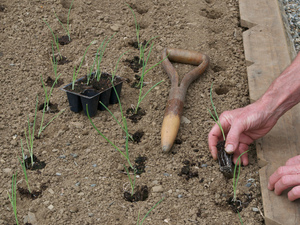 "Krepysh" - a semi-sharp variety with oval-shaped bulbs and a growing season of 80-95 days. Bulbs weighing up to 52 grams have pink scales, are resistant to rot and shooting. The high keeping quality variety is suitable for winter planting. Recommended for growing in all regions of the country.
"Krepysh" - a semi-sharp variety with oval-shaped bulbs and a growing season of 80-95 days. Bulbs weighing up to 52 grams have pink scales, are resistant to rot and shooting. The high keeping quality variety is suitable for winter planting. Recommended for growing in all regions of the country.- "Siberian Amber" is a two-year-old crop suitable for growing on private farms. The growing season of the variety is 55-60 days. Rounded-flat bulbs weigh 28-30 grams and have yellow-bronze scales. The nest has 6 to 8 bulbs.
- "Ural violet" - a semi-sharp variety with reddish-purple scales. Suitable for growing turnip onions. Each head weighs up to 58 grams. The variety reproduces vegetatively, it is resistant to rot and shooting. Recommended for growing in all regions of the country.
Features of growing shallots
To grow a crop, highly fertile loose soils with a neutral reaction are needed. Experienced gardeners recommend planting onions after cucumbers, tomatoes, potatoes, cabbage or legumes.
Before planting the bulbs, it is recommended to sort out and process them in a fungicide. In this case, the plants will be less affected by various pests and diseases.
Row spacing depends on the size of the planting material:
- 20-30 cm for large bulbs;
- 15-18 - for medium;
- 8-10 - for small ones.
More often, it is not recommended to plant onions, since the size of the future harvest depends on the feeding area.
Before planting planting material, on the beds are made furrows 5-6 cm deepthat spill well, but do not condense. The planted bulbs are sprinkled with 2-3 centimeters of earth. When planting, it should be remembered that with strong deepening, the emergence of seedlings will be delayed.
Planting onions in spring
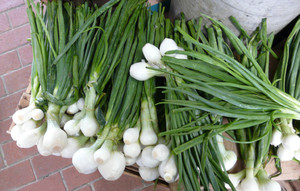 Shallots are best planted in early spring. A culture planted in late spring or autumn does not mature for a long time and is poorly stored.
Shallots are best planted in early spring. A culture planted in late spring or autumn does not mature for a long time and is poorly stored.
The end of April-beginning of May is best suited for planting.At this time, the soil has already warmed up well and there is enough moisture in it for the seedlings to take root. Seedlings will appear in about 10-14 days.
When planting shallots in late spring, when the soil is dry and its temperature is elevated, seedlings may appear only after 20-30 days. In dry soil in hot weather leaves grow fasterthan the roots, the photoperiodic growth regime is disrupted, as a result of which the bulbs do not have time to ripen.
Planting onions in autumn
By choosing frost-resistant varieties with a reduced percentage of shooting, in the second or third decade of September, you can plant shallots before winter.
Advantages of autumn planting:
- storage of planting material is not required;
- in comparison with spring planting, the bulbs ripen 10-12 days earlier;
- plants rooted in autumn use the spring moisture reserves in the soil more efficiently;
- harvesting greenery is possible in the first half of June.
Shallots care
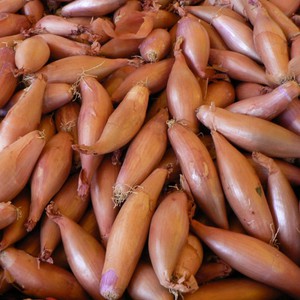 The culture does not require frequent watering. In dry weather, it is necessary to make sure that the onion is watered when mass shoots appear, that is, at the end of May. On average, no more than three waterings are required per season.
The culture does not require frequent watering. In dry weather, it is necessary to make sure that the onion is watered when mass shoots appear, that is, at the end of May. On average, no more than three waterings are required per season.
During the period of active growth between the rows, weeding and loosening... When the leaves grow back, this will help kill the onion fly eggs.
Shallot loves top dressing, which is recommended in mid-June. To do this, you can use bird droppings (1:15), manure infusion (1:10) or mineral fertilizers (40 grams per 10 liters of water).
To make the bulbs larger, the nests are thinned out in early July, removing entirely two or three shootsleaving to ripen three or four. Watering and feeding the plants during this period is not recommended. With excess nutrition and moisture in the middle of summer, only leaf formation will continue, and the bulbs will not ripen well.
Until the arrows have grown to 10 centimeters, they must be broken out at the exit from the sinus. Otherwise, only greens will continue to grow.
Harvesting and storing shallots
At the end of the first decade of July in early-maturing varieties, and by the beginning of August in mid-season and mid-late varieties of shallots, leaves begin to lay down. This is a signal for harvesting, a delay in which can reduce the shelf life of the bulbs.
Harvesting early varieties should be at the end of the second decade of July, and the rest of the varieties - in the first decade of August. Shallots are a delicate plant, so it is not recommended to leave dug shoots in open sunlight. It is better to dry the crop under some kind of canopy.
During the year, the crop will retain its valuable qualities when stored at a relative humidity of 60-70% and at temperatures from 0C to + 10C... Planting material should be stored at a higher temperature up to + 20C.
Small, tasty onions and early tender greens make shallots prized all over the world. In addition, the culture is distinguished by high dietary properties and medicinal characteristics, which are much more than that of turnip onions. Shallots are a favorite spice in French cuisine. It is used for food in fresh and pickled form, as well as for flavoring dishes from meat, poultry, soups, sauces.
